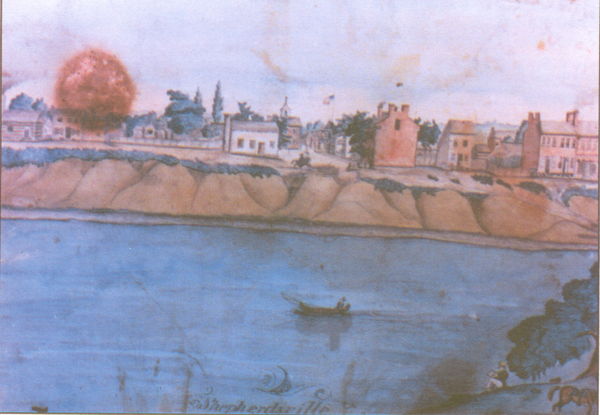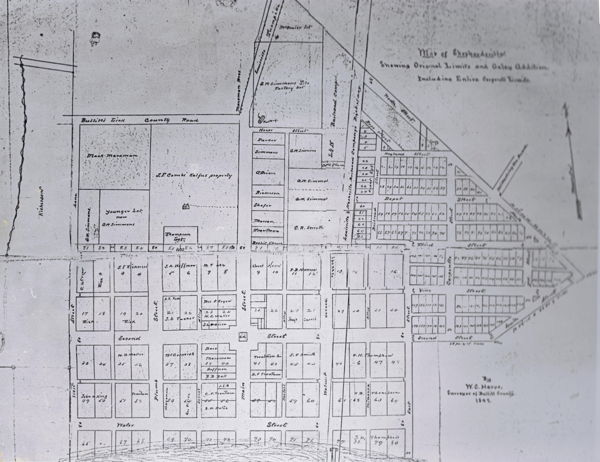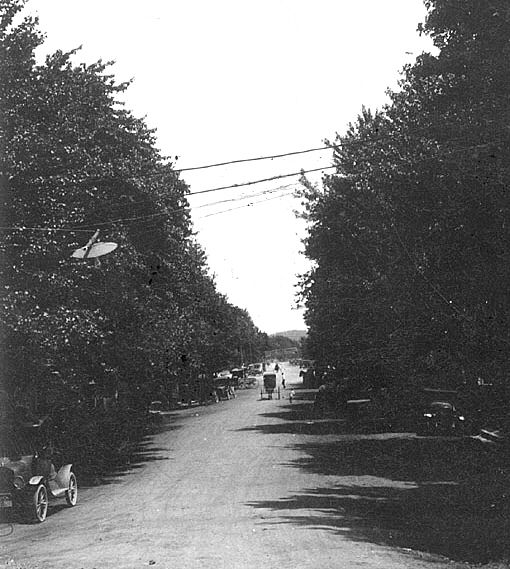
The following article by David Strange was originally published on 28 Feb 2016.
Shepherdsville is the oldest of Bullitt County's eight cities. Allow me, here, to tell you just a little about its long history.
Between 1780 and 1804, surveys were made in the name of Peter Shepherd and his son, Adam, across much of Kentucky. Adam came from Maryland to Kentucky as his father's representative.
In 1793, Adam Shepherd set aside 50 acres of a 900-acre tract of land on the north bank of Salt River and laid out streets and lots. On December 11 of that year the state of Kentucky, barely one-year-old itself, officially recognized this new city of Shepherdsville.



The location probably seemed an obvious choice. It was near the important salt furnaces of Bullitt's Lick, it was next to a river that provided water and transportation, and most importantly it was where a major branch of the old Wilderness Trail crossed the Falls of Salt River heading to the lick and on to Louisville. Since prehistoric times, the Falls of Salt River was the best place for migratory animals to cross. In times of low water, the area would often be dry bedrock, permitting large numbers of animals to cross at one time. The early pioneers used the crossing for the same reason, so what had been a trail for countless buffalo was becoming a road. The location was referred to as where the "great road" crosses Salt River.
The Act of 1793, creating Shepherdsville, also appointed the first trustees: Ignatius "Nacy" Brashear, Samuel Crow, Michael Troutman, Frederick Pennybaker, Benjamin Stansberry, Joseph Brooks and John Essery. Benjamin Stansberry, assistant surveyor for Jefferson County (of which Shepherdsville was a part at that time), surveyed and drew the plan of the town.
In 1796, Bullitt County was created out of portions of Jefferson and Nelson Counties. Shepherdsville, located almost dead-center of the new county, was designated as the county seat. Owners of the lots at the intersection of Main (now Buckman) and Second Streets were asked to give up a portion of their lots and the center was made into a small public square. On this square was built the first county courthouse in 1804.
The population of Shepherdsville in 1800 was 96. It was one of only 29 towns in the state.
Beginning around 1816 in what is today called "The Old Stone Bank," Abraham Field is said to have established the first bank in Kentucky.
Around 1819, John Beckwith built a dam across Salt River below the falls, to power a large water wheel which in turn powered a forge, rolling mill, and grist mill in what is now the back section of Shepherdsville's riverside park. The forge and mill used iron made at a furnace just south of town to create everything from nails to wedges to iron stoves. Some of the stoves still at Shaker Village, in Mercer County, were made there. The iron works are long gone now and nearly forgotten, but if you know where to look you can still find remains of the dam. As you might expect, metal detectors go crazy in the area because of all the iron dust in the ground.
In 1836, a once-nationally-popular mineral water resort was opened and named Paroquet Springs, after the colorful but now extinct Carolina Parakeet that frequented the area. I wrote last year about the Lone Grave that is located there. The resort was badly damaged during the Civil War, rebuilt, but faded away by the 1920's.
In 1855, the L&N Railroad Company built its main line through Bullitt County heading to Nashville, bringing considerable change to Shepherdsville. There are a lot of stories about the railroad, but one I like is about the railroad bridge that crosses the Salt River. In 1862, during the Civil War, Confederate forces were sent three times to destroy the bridge, damaging it but never completely destroying it. Oh, local history markers and even some Civil War era documents say that it was destroyed. But as an iron bridge, it was very difficult to do more than burn the ties. During the third attempt, letters were exchanged between the captain charged to "not leave Shepherdsville until the bridge is destroyed" and his commanding general. With several thousand Union troops heading his way and no explosives or drills to destroy the ironwork, it was agreed to just say the bridge was destroyed and withdraw. Some 130 years later, on November 19, 1991, a garbage truck hit an underpass, damaging the tracks at Shepherdsville, which in turn caused a train to derail and take the bridge down to the river with it. I like to joke that it took a garbage truck to do what the Confederate army could not.
Location and transportation has been a very large part of Shepherdsville's history. From early days of travel along the Salt River, to the Wilderness Road, then the railroad, Highway 61, Interstate 65 and its connections with Louisville's airport and modern-day warehousing industries, Shepherdsville has really always been about transportation. Those industries have brought much growth to the city as well as much stress. Industrial development and expansion has been encroaching on surrounding residential communities who do not want to be annexed or industrialized but see it forced upon them.
Shepherdsville continues to grow both in population and geography in this, its 223rd year. Bullitt County's oldest and largest city, Shepherdsville's population was 11,222 in the 2010 census.
History says that when Adam Shepherd died, he was "buried on a knoll a short distance from town." No one knows just where that was, but I wonder if Adam looked down today on the city he founded, just what he would think of what his city has become.
Much of this information was gathered from the writings of Tom Pack. Much more can be found by searching the history pages of our web site, and at the city web site.
Copyright 2016 by David Strange, Shepherdsville KY. All rights are reserved. No part of the content of this page may be included in any format in any place without the written permission of the copyright holder.
The Bullitt County History Museum, a service of the Bullitt County Genealogical Society, is located in the county courthouse at 300 South Buckman Street (Highway 61) in Shepherdsville, Kentucky. The museum, along with its research room, is open 10 a.m. to 4 p.m. Monday through Friday. Saturday appointments are available by calling 502-921-0161 during our regular weekday hours. Admission is free. The museum, as part of the Bullitt County Genealogical Society, is a 501(c)3 tax exempt organization and is classified as a 509(a)2 public charity. Contributions and bequests are deductible under section 2055, 2106, or 2522 of the Internal Revenue Code. Page last modified: 12 Sep 2024 . Page URL: bullittcountyhistory.org/memories/shep.html